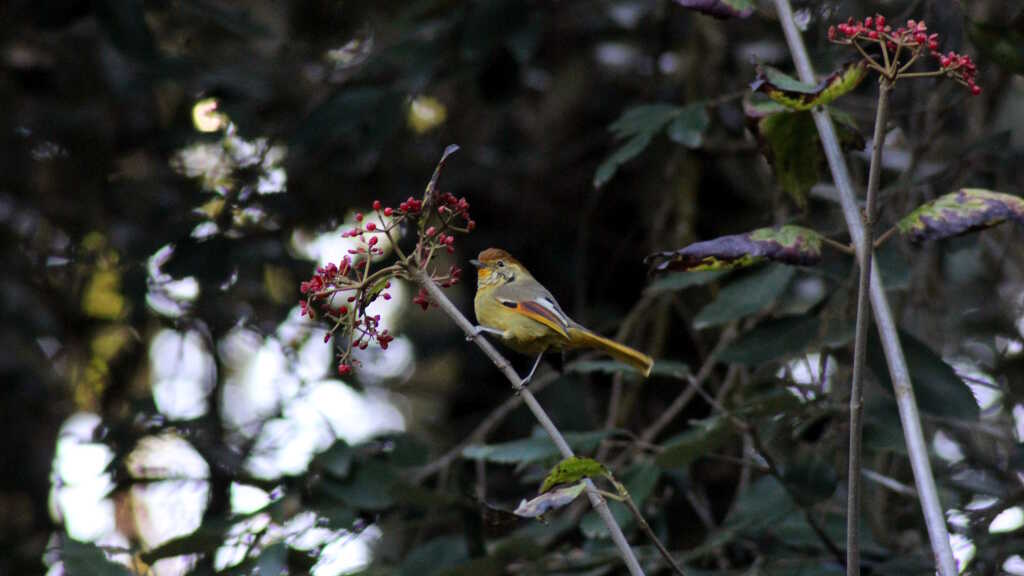
Minla strigula ( Chestnut-tailed Minla )
The Chestnut-tailed Minla (Minla strigula) is a colorful and energetic bird species found in the lush forests of the Great Himalayan National Park (GHNP). This small passerine is a delight to observe, with its vibrant plumage and social nature, often seen flitting through rhododendron and oak forests in mixed-species flocks.
Identification and Features
The Chestnut-tailed Minla is easily recognized by its olive-green body, yellow underparts, and distinctive chestnut-colored tail. Its face is marked with white and black streaks, giving it a bright, alert appearance. The wing feathers show a striking contrast of blue and black, adding to its visual appeal when in flight or perched.
Habitat in GHNP
Within GHNP, the Chestnut-tailed Minla is typically found between 1,800 to 3,000 meters above sea level. It prefers dense understory vegetation, especially areas thick with shrubs and flowering trees like rhododendrons. These habitats provide ample feeding opportunities and shelter.
| Common name | Chestnut-tailed Minla |
| Scientific name | Minla strigula |
| Family | Leiothrichidae |
| Description | It is a resident bird of Himalayas. It has orange crown, black-and-white barring on throat. The wings having orange-yellow panel in wing, and yellow sides on tail. It breed in an altitude of 2100-3600m and in winters it migrates between 1300-2250m. |
Behavior and Diet
This species is highly active and sociable, often moving in small flocks that include other insectivorous birds. It feeds on insects, small arthropods, and occasionally berries. Its constant movement through foliage makes it a vital insect predator and a key player in forest pest control.
Ecological Significance
The Chestnut-tailed Minla plays a key ecological role in GHNP by helping maintain insect populations in check and contributing to seed dispersal through its frugivorous habits. Its presence is an indicator of healthy, undisturbed montane forests.
Conservation Status
Although the species is listed as Least Concern, its dependence on forest habitats means that any large-scale habitat destruction could pose a threat. The conservation efforts at GHNP offer a secure refuge for this bird and many other Himalayan avian species.



